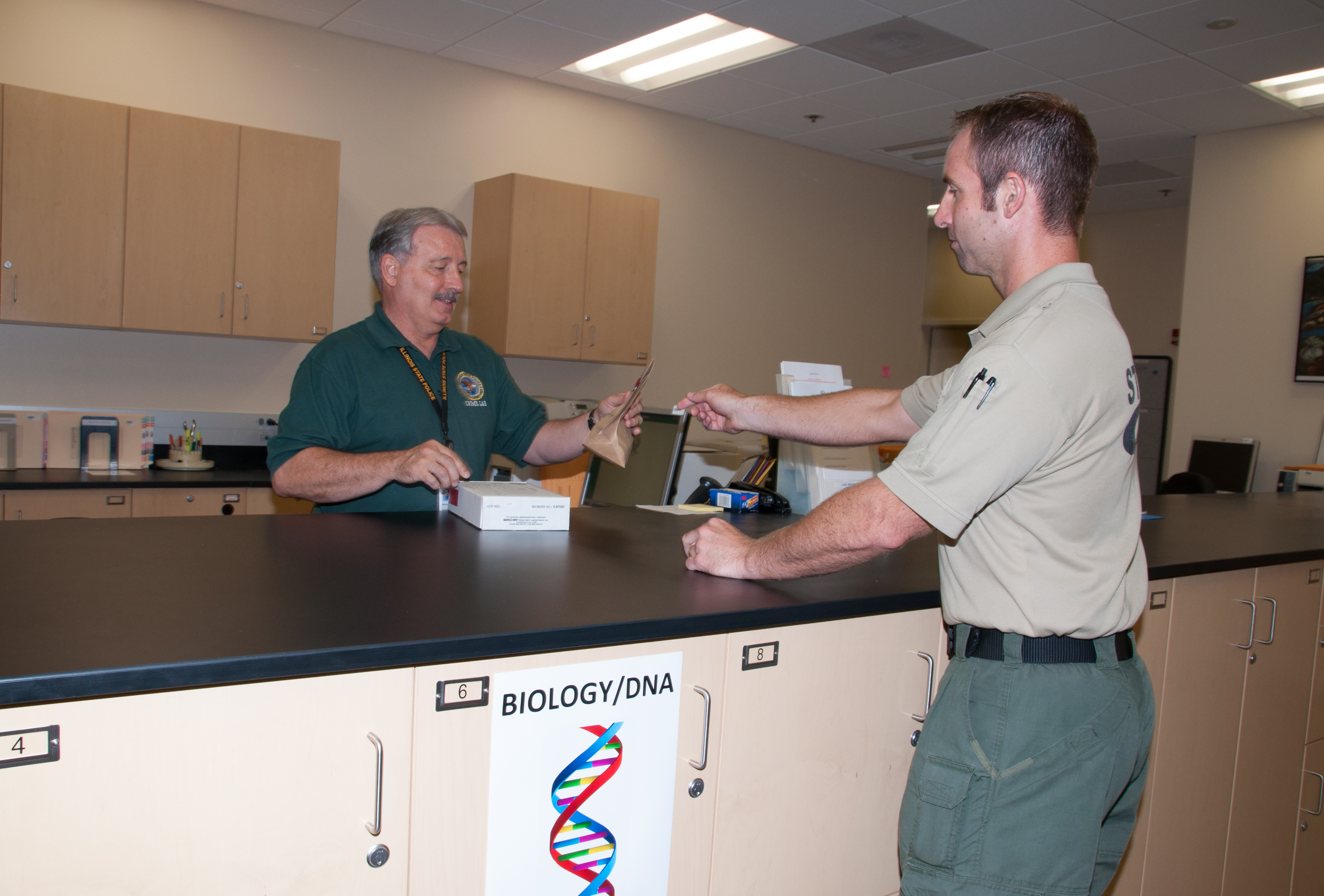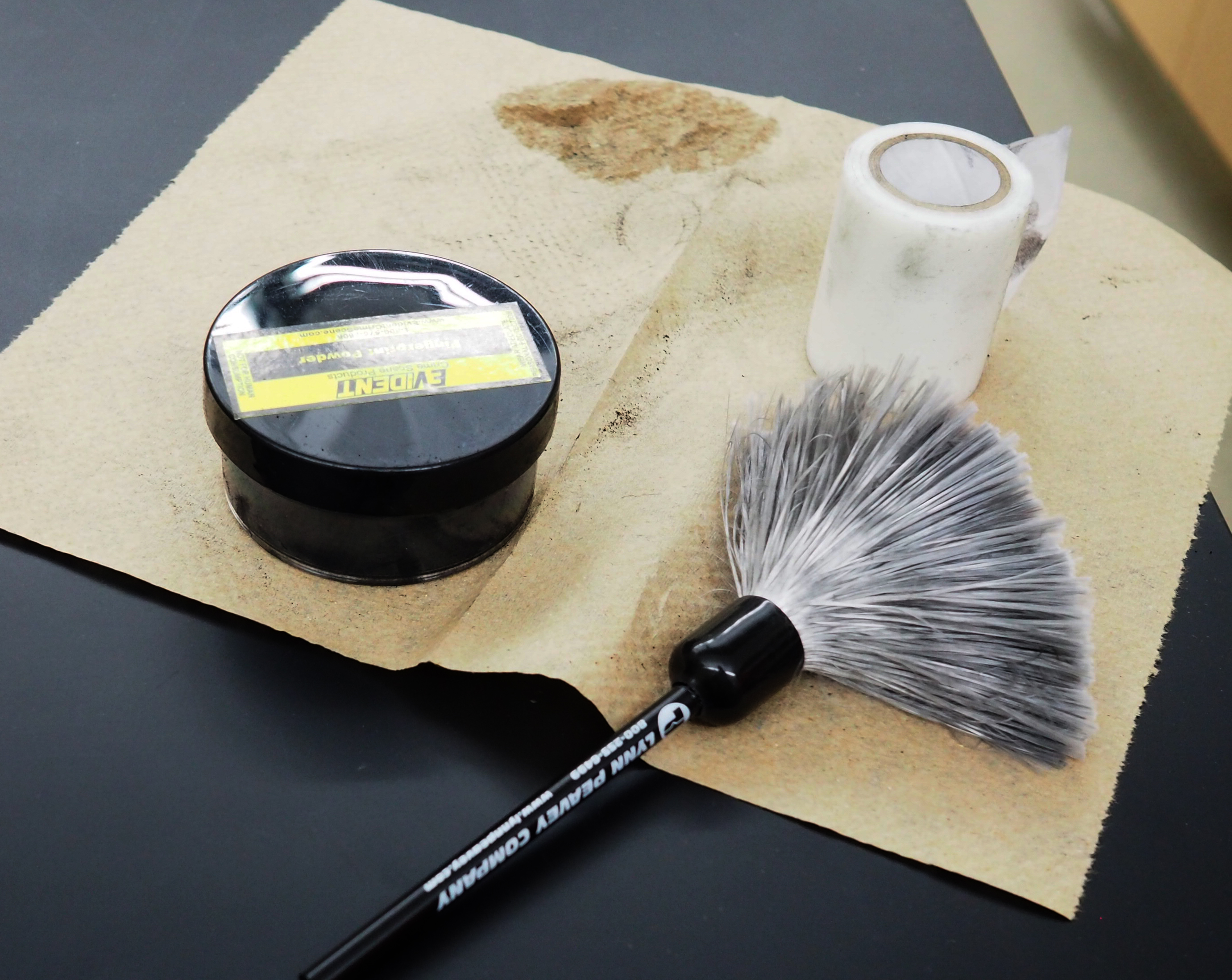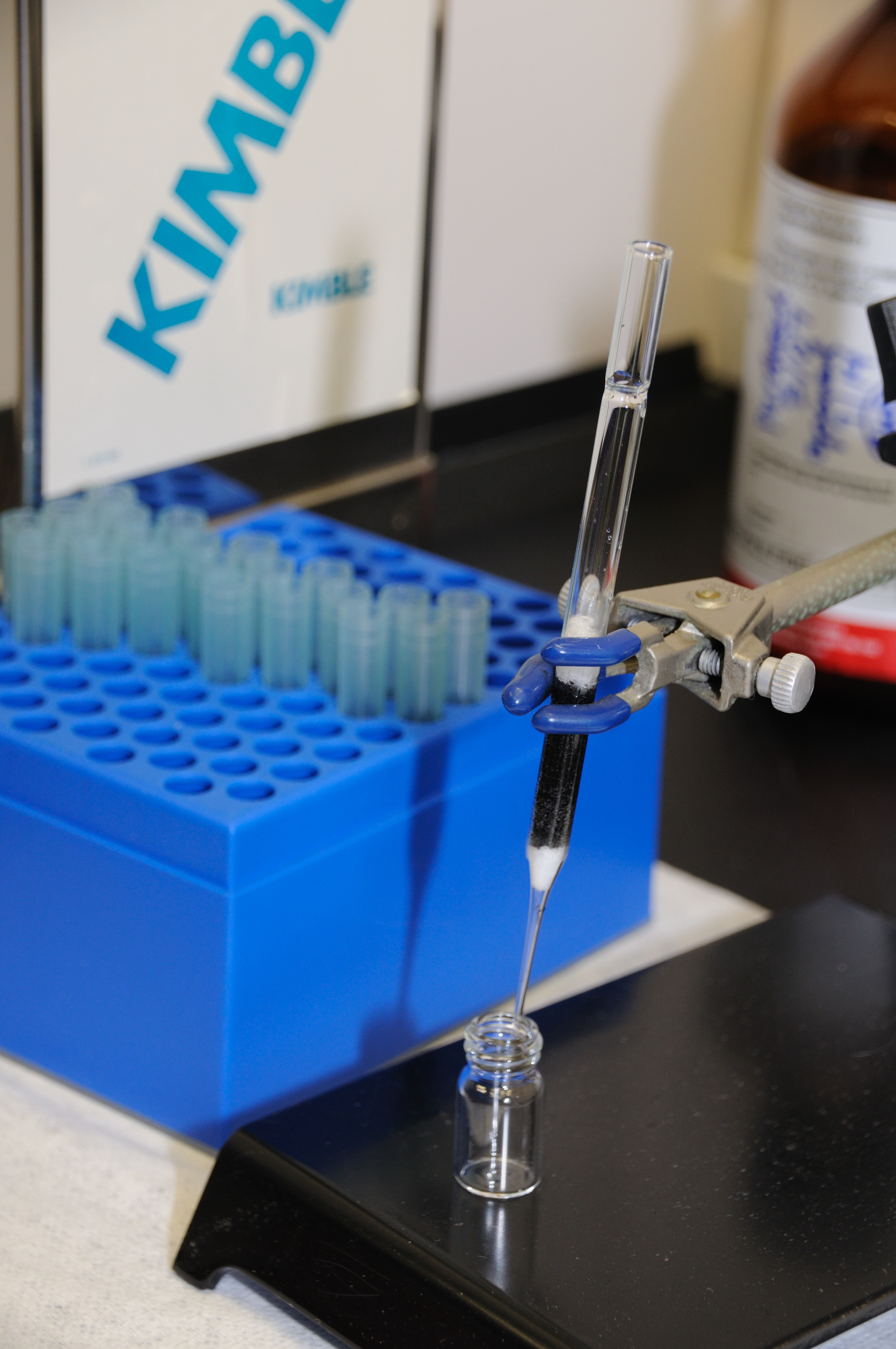Specialties
The Illinois State Police Division of Forensic Services oversees the third largest system of crime laboratories in the world. Seven forensic laboratories provide forensic services to all of the approximately 1,000 law enforcement agencies in Illinois. The laboratories in ISP's system, accredited by the ISO/IEC, are located in Belleville, Chicago, Decatur, Joliet, Morton, Rockford, and Springfield. The specialty areas are as follows:
- Forensic Biology
- Drug Chemistry
- Firearms/Toolmarks
- Footwear/Tire Tracks
- Latent Prints
- Forensic Toxicology
- Trace Chemistry
Daily crime laboratory work takes place to establish the scientific truth about evidence for court. Most ISP forensic science work involves laboratory/bench work analysis. Forensic scientists in the ISP respond to crime scenes infrequently. Rather, daily, the ISP's forensic scientists: 1) think across disciplines, i.e., "What could chemistry and biology and physics and anatomy tell me about this evidence in this crime scene?" 2) make clear bench notes about work, as these may be introduced as evidence in court, and 3) communicate well with one another so they will be able to testify clearly and withstand challenge in court. In addition, forensic scientists regularly train law enforcement personnel in the proper recognition, collection and preservation of evidence. The day-to-day work of a forensic scientist in an ISP crime laboratory, while evidence item and case circumstances vary, include aspects of all of the above activity.
Forensic Biology

Forensic biologists utilize chemical, enzymatic, and microscopical techniques to identify biological samples (e.g., blood, semen, saliva) associated with criminal cases. The forensic biologist can compare DNA genetic markers in crime scene samples to the DNA markers identified in standards from individuals believed to be involved in the case. This type of analysis establishes whether or not a particular individual could be a donor of the biological stain(s) found at the crime scene.
The DNA technology currently in use is based on the amplification process called PCR (Polymerase Chain Reaction). The questioned DNA is extracted out of a stain, amplified to produce sufficient material to test, and then analyzed. The DNA markers tested for are included in a class of markers called STR's (Short Tandem Repeats). Several loci are examined, offering a very high potential for differentiating between individuals. These same markers are used throughout the nation so that a computer based search system can be used.
DNA Indexing
The DNA Indexing Laboratory was established as a branch of the Springfield Forensic Science Laboratory to analyze samples collected from individuals that are eligible under Illinois State Statute 730 ILCS 5/5-4-3. This law was originally enacted in 1989 and required persons convicted of a sexual offense to submit samples for DNA analysis. Since then, the law has been expanded to include persons convicted of all felony offenses and persons arrested for certain other qualifying offenses.
DNA analysis is performed on these samples and the resulting DNA profiles are submitted to the Federal Bureau of Investigation’s Combined DNA Index System (CODIS), a database software program. Potential suspects for unsolved crimes can now be identified using computer searches against this database. During a search, the DNA profiles developed from forensic samples are compared against the offender DNA profiles to identify possible matches. These searches have also proven to be invaluable in identifying repeat offenders, assisting with serial crime investigations, and resolving missing and unidentified person cases.
Drug Chemistry
Drug Chemistry is responsible for the analysis of exhibits suspected of containing controlled substances (drugs) and Cannabis (marijuana). This includes plant materials, tablets, capsules, powders, paraphernalia and residues, but does not include biological specimens. These are analyzed by the Toxicology section.
The amount of substance is determined using a balance. During analysis, a case is inventoried with careful notes being made at this and each step of the analysis. Several options are available for preliminary testing, including traditional wet chemistry methods such as spot tests, thin layer chromatography (TLC) and extraction, as well as instrumental techniques such as ultraviolet (UV) spectroscopy and gas chromatography (GC).
Confirmation of substances tentatively identified is achieved via infrared spectroscopy (IR) or mass spectrometry (MS). Microscopy is also available for examining case material. A report is issued naming any controlled substances identified. Testimony in court is sometimes required to defend and describe the methods used by the forensic chemist or the conclusions that were reached.
Firearms/Toolmarks
Firearms Identification is a discipline of forensic science which has as its primary concern to determine if a bullet, cartridge case, or other ammunition component was fired by a particular firearm. The comparison of fired evidence components can occur even in the absence of a suspect firearm in order to determine if a single firearm or multiple firearms were used at a crime scene. The Forensic Scientist may also be asked to perform function tests and serial number restorations on firearms as well as muzzle-to-garment distance determinations. Distance determinations utilize visual, microscopic, and chemical tests to identify patterns of gunshot residues on an item of clothing a victim was wearing in order to establish how far away the firearm was when the garment was shot through.
Toolmark Identification is a discipline of forensic science which has as its primary concern to determine if a toolmark was produced by a particular tool. Toolmarks left on an item at a crime scene can be microscopically compared to test marks made in the laboratory by suspect tools. Based on this comparison, the Forensic Scientist can determine whether or not the suspect tool was used in the crime.
Footwear/Tire Tracks
Footwear and tire track evidence involves the evaluation and comparison of shoe and tire impression evidence. During the examination of a crime scene, if footwear or tire track evidence is found and collected, examiners can compare these unknown impressions at the scene to a suspect’s shoes or tires.
These footwear and tire track impressions are referred to as "pattern evidence" because the impressions leave a pattern/design from the particular shoe outsole or the tire tread. Impressions at a scene can be collected in several different ways. These impressions should be photographed, but can also be cast, lifted and/or the whole item containing the impression can be submitted to the laboratory. These imprints or impressions can be compared to a suspect's shoe or a vehicle's tire to try to determine if the shoe or tire is the same one that left the impression at the scene.
Latent Prints

Latent print identification is one of the oldest forensic sciences and has been used in criminal investigation since the late 1800s. Latent print examination applies the science of fingerprints to unknown ridge detail deposits recovered from a crime scene or developed on objects submitted to the laboratory for fingerprint processing.
Fingerprint deposits may or may not be visible to the naked eye due to the nature of their composition and the various types of surfaces upon which they are placed. Examiners visualize these deposits using a vast array of procedures, such as the application of powders, chemicals, fumes and dyes. Special devices, including ultraviolet lights and lasers, may also be utilized, as is well as photography and digital imaging. Ongoing research and development are continually introducing new procedures into the laboratory.
Latent print examiners also undergo specialized training in order to attain the knowledge and skill necessary to individualize the one person who is the source of a fingerprint deposit. The visualized, unknown latent print is analyzed to determine if sufficient information is present for a comparison to the inked fingerprint of a known suspect. Latent prints may also be searched in the Automated Fingerprint Identification System (AFIS), a repository of fingerprints of millions of persons, when a suspect is unknown.
Forensic Toxicology
Toxicology is the study of poisons. Forensic toxicology encompasses a broad spectrum of activity ranging from the isolation and detection of intoxicating substances in biological materials to providing expert testimony and interpretation of findings for police agencies and the judicial system.
The modern forensic Toxicology section utilizes a variety of analytical instrumentation and techniques to carry out its mission. Although the vast majority of analyses are performed using sophisticated, ultra-sensitive electronic instruments, certain tests still require traditional chemical techniques for substance identification. Generally, the most difficult portion of any toxicology analysis is the process of isolating the toxic substance from the biological media. This must be accomplished in a manner that provides a concentrated sample which is relatively free of interference by naturally occurring substances. Once the compound is isolated, purified and concentrated, identification and quantitation become possible. In order to provide the user agency with sound information as to state of intoxication, degree of impairment or contribution to a fatality, the toxicologist must be informed as to the nature and circumstances of the intoxication as well as the quantity or concentration of the substance involved.
Trace Chemistry

The Trace Chemistry section of the laboratory analyzes a wide variety of evidence types. Fire debris is analyzed for the presence of an ignitable liquid, which may have been used as an accelerant in an arson fire. Paint from a hit-and-run accident or a burglary can be compared to see if evidence left at the scene can be tied to a suspect. Coded information from each available layer of an unknown automotive paint is entered into a computer database, Paint Data Query (PDQ), and a list of vehicles similar by layer sequence and chemistry to the unknown is produced. By comparing the infrared spectra of the layers of the unknown to those on the PDQ list, a refined list of the possible make, model, and year of the unknown can be produced. Primer Gunshot Residue (PGSR) analysis permits an identification of the morphological and elemental characteristics of particles taken from the hands or clothing of suspects which forms the basis for a conclusion related to a firearm discharge.
Several analytical tools are utilized by the trace chemist. The stereo microscope is used for close visual examinations and for preliminary chemical spot testing. Analytical instruments are used to make comparisons and identifications. Some of the instrumentation used in the Trace Chemistry section includes gas chromatography, infrared spectroscopy, mass spectroscopy, x-ray diffraction, scanning electron microscopy and energy dispersive x-ray microanalysis.




